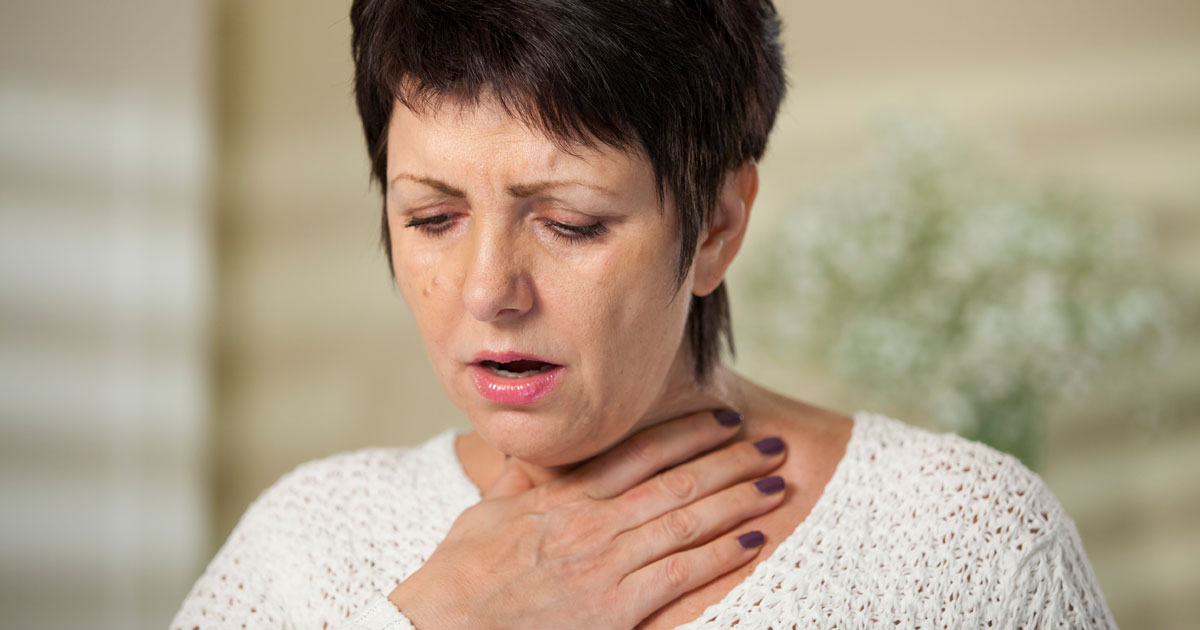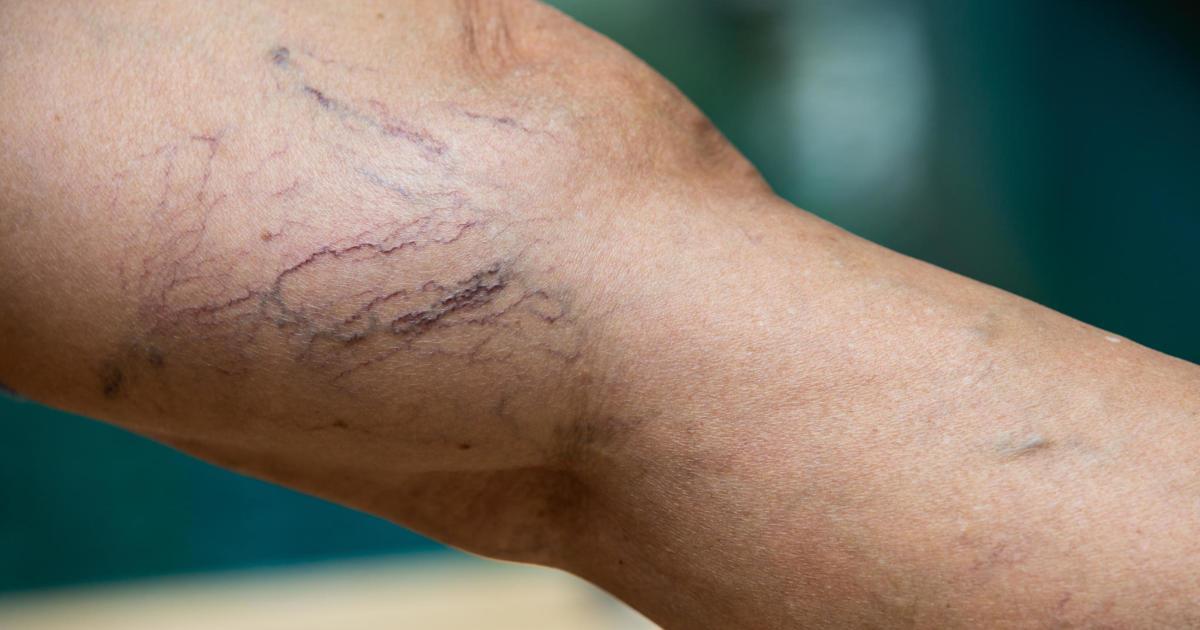Warning Signs Of Deep Vein Thrombosis
Deep vein thrombosis (DVT) is an acute and serious medical problem that requires urgent attention. The condition is caused by the formation of a blood clot in a vein deep inside the body, typically in the lower leg, though deep vein thrombosis can also frequently occur in the pelvis and thigh. If the clot travels to the lungs, deep vein thrombosis can be fatal. Pregnant women and individuals who must sit or lie down for long periods, such as those recovering from surgery or who are traveling on a long airplane flight or car trip face an increased risk of developing deep vein thrombosis. Obese individuals may also have an elevated risk.
If treatment for deep vein thrombosis is sought early, doctors can administer medication to break up the blood clot. This is why it's especially important to recognize symptoms of DVT. The following symptoms may signal deep vein thrombosis and should be investigated by medical professionals.
Cramping Or Soreness In The Leg

Cramping or soreness in the leg may indicate the presence of a blood clot in the calf, one of the most common locations for deep vein thrombosis. The cramping and soreness are almost always in one leg only. Individuals most at risk of having DVT in this location include travelers and those recovering from surgery, as both of these situations result in immobility and limited blood flow. The cramping, soreness, and pain from deep vein thrombosis are generally unexplained by other injuries or causes. While the pain may start out as mild, it can quickly become severe in a matter of hours. For example, some patients with DVT cannot tolerate having their leg touched by a sheet due to the extreme pain it causes. In addition to cramping and pain in the leg, patients may also have extreme pain in their foot or ankle. Doctors often recommend compression socks for patients who are in the hospital after surgery, and travelers on long trips to reduce the risk of deep vein thrombosis. Compression socks help keep blood moving in the legs to reduce the risk of a clot.
Reveal the next major warning sign of deep vein thrombosis.
Discolored Skin On The Leg

Discolored skin on the leg can be one of the early warning signs of deep vein thrombosis. In an area affected by this condition, patients may notice their skin in this area looks paler than the skin around it. Sometimes, the skin may turn red or blue due to a lack of circulation to the area. In addition, there may be distended, bulging veins in the area that are not normally present. Since these skin changes are some of the only visible signs of deep vein thrombosis, patients may wish to monitor the discolored area to see if it changes in color or if it grows in size. Patients may even wish to take a photo of the area and use a marker to draw around the edge of the discoloration to objectively assess whether it is growing. This information may be useful to doctors when assessing the urgency of the condition.
Learn more about the signs of deep vein thrombosis now.
Warmth In The Affected Leg

Warmth in the affected leg or other location of potential deep vein thrombosis can be objectively assessed by comparing the temperature of the affected leg to the unaffected leg, other arm, or opposite side of the body). When evaluating patients for deep vein thrombosis, warmth in the affected area is one of the first things doctors check for. If doctors do find the temperature of an area is different to the opposite side or is otherwise cause for concern, they will likely order an ultrasound to detect the presence of a blood clot. Advanced ultrasounds, called Duplex ultrasounds, can provide a color image of blood flow to the area, allowing doctors to properly assess circulation levels. Until patients can be seen by a doctor, they should monitor the affected area for temperature changes. Patients should not try to apply ice packs or any other cooling aids to the area as this can mask the seriousness of symptoms.
Keep reading to discover another surprising sign of deep vein thrombosis.
Sudden Shortness Of Breath

Sudden shortness of breath may be a sign a blood clot has broken off and traveled to the lungs, which can result in a fatal pulmonary embolism. Shortness of breath, medically referred to as dyspnea, can cause patients to feel as though they cannot take in enough air, a sensation known as 'air hunger.' Patients with this condition may also feel as though they are suffocating. Shortness of breath is commonly accompanied by chest pain and can sometimes cause coughing, wheezing, fainting, and anxiety. In particular, patients with shortness of breath may have sharp pain when they try to take a breath in, which is known as pleurisy. Doctors listen to the heart and lungs using a stethoscope and measure respiration rates to evaluate shortness of breath. Patients will likely be placed on an electrocardiogram monitor that records heart and breathing activity. Imaging tests such as CT scans may sometimes be needed.
Uncover another sign of deep vein thrombosis now.
Lightheadedness And Dizziness

Lightheadedness and dizziness may be additional signs a blood clot from deep vein thrombosis has broken off and traveled to another part of the body. As with shortness of breath, both lightheadedness and dizziness can indicate the clot has moved to the lungs. In the case of possible deep vein thrombosis, dizziness may progress to fainting. Patients who experience dizziness and lightheadedness should not try to walk, and instead, they should sit or lie down for several minutes. Individuals who try to stand up while they are dizzy may have an increased risk of falling. Dizziness may be one of the later warning signs to occur with deep vein thrombosis, and patients who are experiencing it along with any of the other symptoms of possible DVT should not wait to see if symptoms will improve. Instead, they should go immediately to an emergency room or call for emergency medical assistance.
Get more information regarding the symptoms linked to deep vein thrombosis now.
Coughing Up Blood

An individual affected by deep vein thrombosis may experience coughing up blood, sometimes called hemoptysis, as a symptom of their condition. Coughing up blood is a symptom that occurs when an individual incurs damage to the internal tissues of their lung. Millions of blood vessels line the lung and the small air sacs inside of them so oxygen and carbon dioxide exchange can occur. Individuals with deep vein thrombosis have blood clots form in the deep veins of one of their legs. When the blood clot breaks off of its original location and flows through the bloodstream and into the individual's lungs, it can cause the vessels it flows through in the lungs to become damaged. Damage can occur due to the passage of the clot itself, or due to an obstruction in the flow of blood to the lung tissues. The damaged blood vessels in the lungs leak blood, which accumulates in the branches of the lungs of which air uses to travel. The affected individual can start coughing this blood up because the blood obstructs the normal flow of air through the lung.
Read more about the warning signs of deep vein thrombosis now.
Chest Pain Worsens Upon Breathing

Individuals with deep vein thrombosis may experience chest pain that worsens upon breathing as a manifestation of their condition. The type of pain that occurs in affected individuals is best described as a sudden and sharp pain in or around the chest or ribcage. This type of pain occurs in individuals with deep vein thrombosis when a part of a clot that has formed in the deep veins of the leg has broken loose and has become lodged in the individual's lungs. Because the clot in the lung stops the flow of blood through some of the individual's lung tissues, the tissues suffer damage. When living tissue incurs damage, the body responds with a defense mechanism to help prevent further injury and infection. This response is the job of the immune system that sends proteins, fluids, and leukocytes to the site of the damaged tissue. In cases of deep vein thrombosis precipitated by pulmonary embolism, the inflammatory response summoned to the site of the tissue damage is what causes the individual to feel these sudden and sharp sensations of pain in the chest.
Keep reading to learn more about the various symptoms associated with deep vein thrombosis now.
Rapid Pulse

Deep vein thrombosis patients can experience a rapid pulse or tachycardia as a sign or complication that occurs as a result of their condition. A fast heart rate is a typical symptom that goes along with the others that occur when an individual's deep vein blood clot breaks off and travels to their lungs. When the clot becomes lodged in the lungs, it causes reduced lung function because there is not an adequate amount of blood flow through the lung. When there is diminished blood flow in the lung, the blood is not able to undergo oxygen and carbon dioxide exchange. This malfunction causes an overall reduction in the amount of oxygen concentration in the blood flowing throughout the body. The individual's brain is able to detect this poor oxygen concentration in the blood and releases hormones that signal the heart to work faster and harder. This response intends to compensate for the shortage of oxygen by using the heart to pump blood more quickly into the lungs for oxygenation, and then back out to the tissues of the body. A fast heart rate is a common indication of a blood clot that has become lodged in an individual's lungs.
Continue to uncover details regarding more deep vein thrombosis warning signs now.
Pulmonary Embolism

Pulmonary embolism is a medical emergency that can be a sign an individual has deep vein thrombosis. Deep vein thrombosis occurs when some mechanism causes a blood clot to form in the deep veins of a leg or arm. A blood clot is a blend of red blood cells, fibrin, and platelets that is meant to stop an individual from bleeding. In some individuals, blood clots can form without a functional cause. Usually, another underlying medical disease or condition is responsible for triggering the coagulation cascade or process of blood clot formation. The more blood clots that form in an individual's legs, the higher they are at risk for experiencing complications that occur from part of the blood clot breaking free or the entire clot dislodging from its original location. When the clot does break off, it is able to flow freely in the bloodstream with the direction of blood flow. The blood in the deep veins flows in the direction back toward the heart where it is pumped into the lungs for oxygenation. When the clot becomes loose and travels through the vein, into the heart, and then becomes lodged in the lungs, it is called a pulmonary embolism. Because a pulmonary embolism stops the proper flow of blood through a vital organ, it is an urgent medical emergency.
Learn more about what can indicate the presence of deep vein thrombosis now.
Surface Vein Distension

Individuals affected by deep vein thrombosis may experience surface vein distension. Veins, by definition, are tubular structures in the body that contain a set of valves that function to push blood in one direction. Veins are responsible for returning oxygen-poor blood from tissues around the body back to the heart for oxygenation. Several mechanisms can influence the function of the veins, including the complication of a lodged blood clot. When a blood clot forms in the smaller veins closer to the surface of an individual's skin, surface vein distension occurs. The blood clot stops the flow of blood in the small vessel back to the heart, resulting in cellular damage because the accumulation of oxygen-poor blood in the vein causes a backup that doesn't allow oxygenated blood reach the cells. The immune system then summons an influx of specialized proteins, fluids, and white blood cells to the site of the damage. This inflammatory response causes the area around the obstructed vein to become visibly swollen, tender, painful, and red colored through the surface of the skin. Smaller clots are more likely to form in smaller veins in individuals who have deep vein thrombosis caused by a mechanism that allows for the abnormal formation of multiple clots, rather than just one large clot.